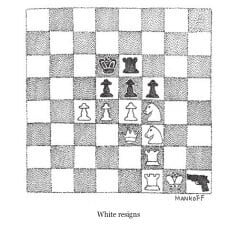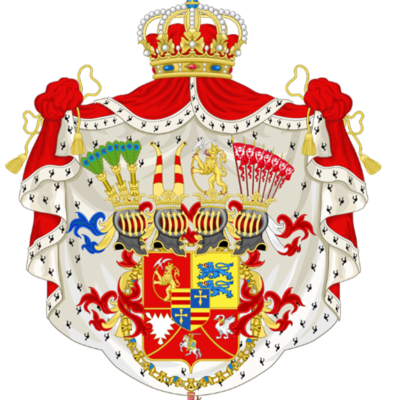Understanding brand strategy
The two concepts are often confused.
A brand is the total reputation of a company, product, or service. It consists of many parts – one of which is marketing. Other equally important parts of a brand include product, sales, price, location, customer service, on and offline experience, internal culture, company mythology etc...
A brand articulates, clearly and competitively, how a business brings its offer to life for its customers.
A brand strategy should clearly define a brand’s purpose, values, personality and positioning - the most compelling reason for customer choice: a core proposition.
This will help a company to make clear, unified, focused decisions to grow. Brand strategies tend to focus on the big picture, but usually include an actionable mission that aligns with short, mid, and long-term business goals
Its benefits are various:
- Clearly defines position in the market and the value it provides to new and existing customers
- A framework to understand current and potential customer purchase drivers
- Creates consistency of message across all brand touch points thus increasing awareness and customer trust
- Helps better cross-functional departmental communication
- Gives guidelines for better decision making, budget planning, and time management
- Identifies opportunities, weaknesses, threats and sets initiatives.
- Supports either a company’s founding vision – or refreshes it

As you know much, much is written, talked and evangelised about creating great brand strategies. Many strands of thinking are woven in to make the whole.
It’s an industry. It’s a subject for another day. However, it’s useful to see how brands have changed over the years since the macro - and ever-changing background of political, socio-cultural and psychological factors - affect brand strategy.
Mad Men have a lot to answer for
In the beginning there was “Branding"
A mark of ownership, trust, and quality, which evolved into a more sophisticated symbol of differentiation and identification post -World War II. As commerce became global and markets became saturated with products and services, the need to differentiate increased, as did the need to help customers identify and choose. Companies came up with endlines, assets, characters and built a presence on mainstream media.
By the 1970s and ’80s, manufacturers fully recognised how consumers developed relationships with their brands - and how they could infuse them with a clear proposition, values, and special qualities to broaden their appeal.
The purpose of a brand is still to serve as a market positioning identifier, setting businesses and individual products apart from the crowd both visually and verbally; but the world has become more complex.
We all understand now that brands are not built simply through communications, but through a combination of business activities covering products and services, environments, culture, and communication - all of which create the total brand perception held by not only customers but many stakeholders as well.
The growing wealth of data has led to a more sophisticated approach to brand strategy. It’s one that linked to economic value, and ultimately the creation of growth based upon robust and strategic methodology.
‘Brand’ is no longer an afterthought or a responsibility relegated to the marketing department. It has become not only intertwined with business strategy; it has became business strategy brought to life.
This has clear implications for us all in brand strategy especially in an information-saturated physical and digital world increasingly based around integrated products, services, information, and entertainment.
Here's more about Anew's approach to building brand strategies for luxury brands around the world.
Understanding Marketing Strategy
This is the vehicle that delivers the stakeholder-facing brand message. It is a function of brand strategy and, crucially, the business plan.
Based on a company’s brand strategy, including proposition, key messaging, target customer demographics, tone etc, it outlines the ideas, tactics initiatives and timetables to communicate key messages to your target audiences.
This can include on/off line content strategy, media selection, PR, trade support etc.

To repeat, marketing strategy has to reflect business strategy.
It sounds obvious but it still sometimes separated, and the split can be telling. It signals that the marketing function is not perceived as a growth contributor or generator of success and the required business outcomes.
A good marketing strategy must address key business strategy elements such as:
- vision, mission, goal
- the five-year financial plan and where the company is on that journey
- how to get to revenue goals - acquisitions, diversification, expansion, flotation, etc
- short, medium and long-term business priorities
Marketing strategies should ideally have longer lifespans than individual marketing plans because they contain core propositions and other key elements of a company’s brand, which generally hold consistent over the long haul.
In other words, marketing strategies cover big-picture messaging, while marketing plans delineate the logistical details of specific campaigns.
The importance of measurement

A small sentence with big implications. What gets measured gets managed. If marketing is not fully accountable, decisions on where and what to invest in are harder to make, especially, as we can see, in unpredictable times. It’s not BAU. And most likely never will.
Like any other strategy, marketing must state goals and measurement criteria.
Usual KPI’s include sales revenue and/or profitability, or a company’s share price. Other measurements – depending of course on objective - include demand generation/gathering and how each media channel contributes to purchase.
Nothing is ever set in stone
Brand marketers are constantly re-inventing in the face of consumer expectations, technology or market disruption.
What must also remain constant is that marketing is seen as an engine of growth so the choices made in a company always come back to a ‘mothership’ of a core business strategy.
Marketing strategy is a tool. It can change based on customer data, success of campaigns, technology, trends, budget, etc. Even a pandemic.
Brand strategy is the cornerstone of an overall business plan. It is the roadmap guiding the brand to a destination. It only changes if the destination does
The meaning of it all
The precise meaning of marketing strategy is debated endlessly so many definitions exist.
Usually these articles end with a business quote.
But we like Maya Angelou’s observation:
“I’ve learned that people will forget what you said, people will forget what you did, but people will never forget how you made them feel.”

Truth and sincerity, not jargon.
About Anew
Anew are brand development and marketing specialists for ambitious businesses of excellence. We help companies increase brand profitability through sharper insights, distinctive propositions, creative ideas and faultless execution. We are particularly adept at working directly with luxury brands, business owners, start-ups and entrepreneurs who are committed to sustainability, outstanding quality and craft.
You can read more about us here
And if you’d like to discuss a potential brand strategy project, do get in touch










































